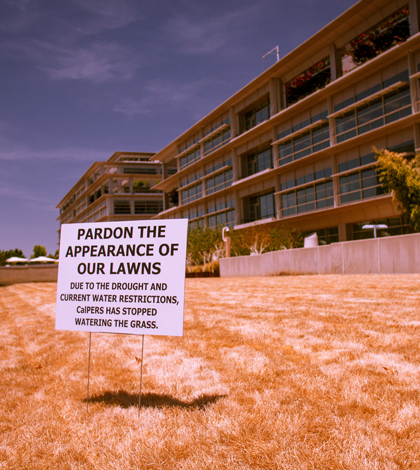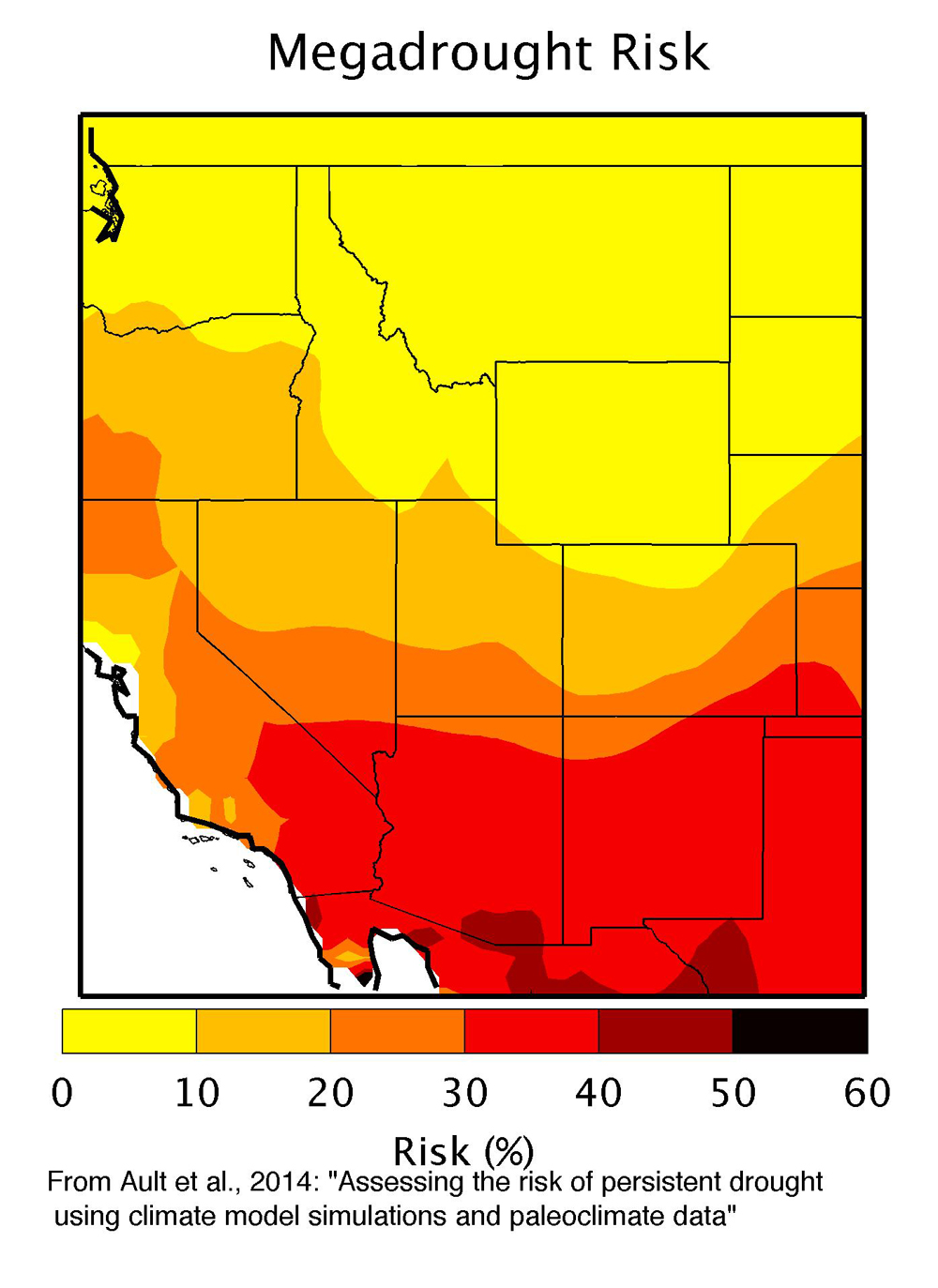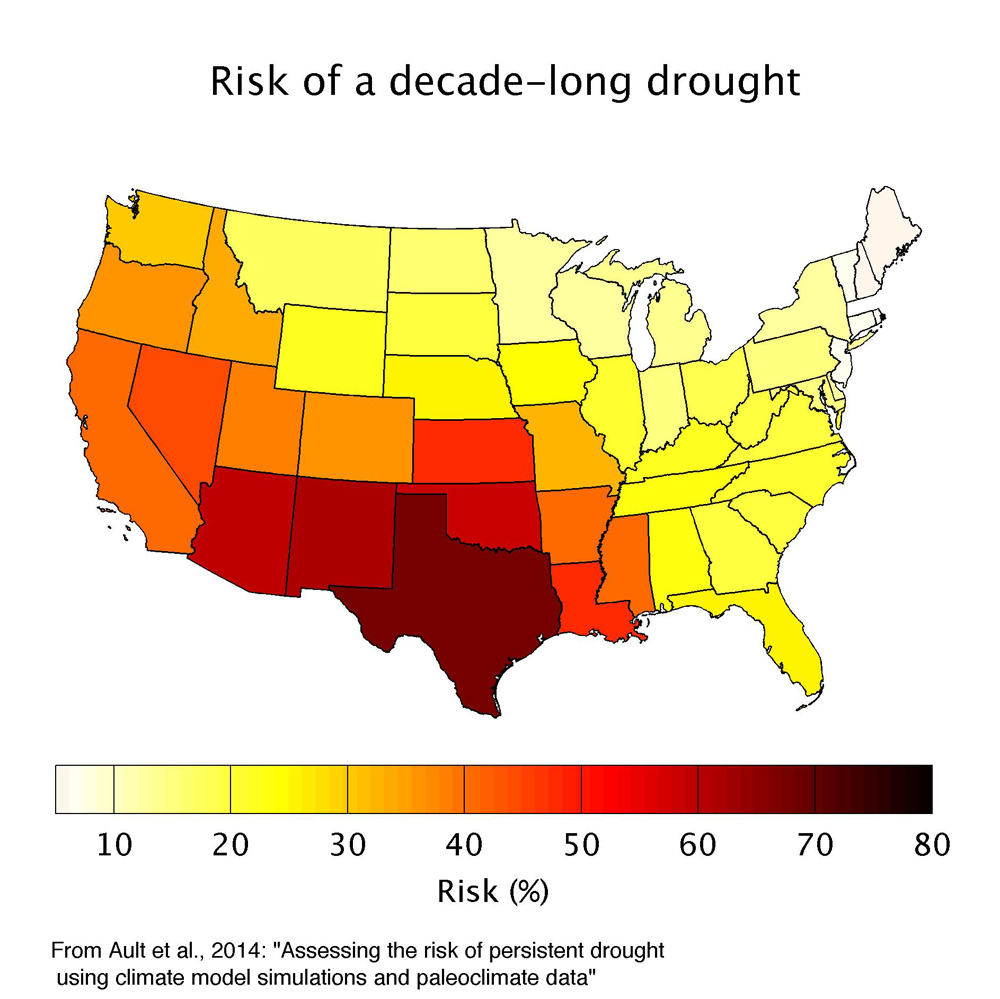Multi-decade “megadrought” possible in U.S. Southwest this century

Drought and watering restrictions lead to dead lawns near Sacramento. (Credit: Kevin Cortopassi, via Flickr)
After two years with little precipitation, California’s record-setting drought is beginning to look more like desertification than below-average rainfall. Over the past 18 months, 63 trillion gallons of water have drained from the state’s reservoirs — so vast a deficit that the ground has risen up to half an inch under the reduced load.
But a recent study shows that this sort of extreme drought is neither a new occurrence nor anything close to the full extent of its potential severity. In fact, decade-spanning “megadroughts” could become far more common in the southwestern U.S. and other parts of the world.
“A decade-long drought is not where we stop. It’s really a multi-decadal megadrought that our methods were trying to detect,” said Toby Ault, an assistant professor at Cornell University. He worked alongside researchers from the University of Arizona and the U.S. Geological Survey, using computer models to predict the risk of megadrought over the course of this century.
Once or twice a century, a 10-year drought comes along and shakes up the climatological status quo. The most infamous of these events in recent history was the Dust Bowl of the 1930s. Analyzing tree rings and sediment acquired from lakes and caves, the researchers found that lengthier, more severe megadroughts happen one or two times per millenium. But as the climate changes, so too does the risk of these events.
“There’s some risk normally, but climate change is really the driver of the southwest getting drier in the models — and because it gets drier, the risk goes up.” Ault said.

The risk of megadrought over the next century in the Southwest (Credit: Cornell University)
Ault said that there’s a 50- to 80-percent chance of a decadal drought occurring in the southwestern U.S. before the end of the century, with the highest-risk states being those along the Mexican border. Over the same time period, the study predicts a 30- to 50-percent likelihood of a multi-decadal megadrought in the region.
While the risk of a severe drought event in the U.S. is very real, Ault seems confident in the abilities of the government and the scientific community to respond accordingly.
“I have very little doubt that we can engineer and manage our way through a megadrought,” Ault said. Other parts of the world, he said, might not fare as well.
Northern Mexico, for instance, may actually be at greater risk of experiencing a megadrought this century than the southwestern U.S. Lacking comprehensive infrastructure in some regions, an event there could be even more devastating to the local economy and ecosystem.

Chance of a 10-year drought across the U.S. over the next century (Credit: Cornell University)
People living in the drier parts of the world need not abandon hope quite yet. Weather systems are complex, and Ault said that certain fluctuations — such as a well-timed El Nino — could actually stave off an impending megadrought, or end an active one early. After all, Ault noted, “We’re not saying it’s imminent, we’re saying that the risk is higher this century than it was in the past.”
Even so, precautions should be taken against reckless water usage, particularly in areas most vulnerable to drought. Ault admitted that management and conservation policy don’t fall under his expertise, but he did point out one idiosyncrasy of modern living: “Everybody can more or less agree that in this country we are literally, in many regions, flushing drinkable water down the toilet.”
“There are different ways that we could use water more carefully,” Ault said. “I’m very optimistic that those solutions are out there, that we can find solutions to cope with this kind of risk.”
In California, Ault said, one question is beginning to form in the collective minds the state’s citizens: “Is this a megadrought?” The answer is — perhaps appropriately — ambiguous, verging on ominous.
“What’s happening right now in California and the southwest is a glimpse of the shape of things to come,” Ault said. “It’s a sneak preview of the kind of things researchers have been talking about for quite some time.”





0 comments